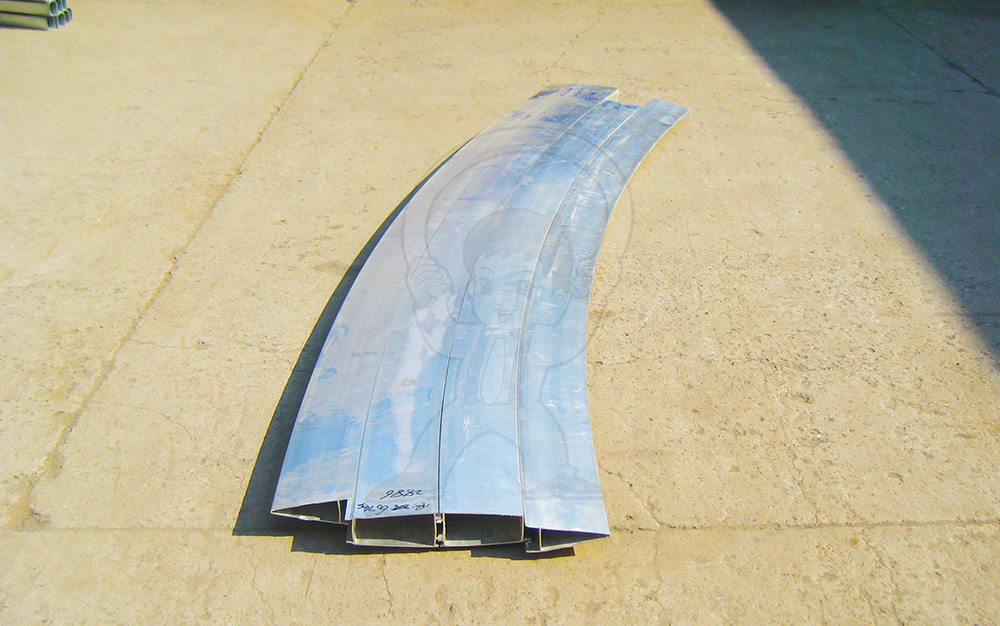The Science Behind Profile Bending: Materials, Methods, and Innovations
Profile bending is an essential process in the field of manufacturing and construction, enabling the transformation of flat materials into complex shapes required for various applications.
Profile bending involves the deformation of materials to create curved or angular shapes, often used in structural components like beams, frames, and supports. This process can be applied to a variety of materials, including metals, plastics, and composites, each requiring specific approaches and considerations.
Materials Used in Profile Bending
1.Metals: Metals such as steel, aluminum, and brass are commonly used in profile bending due to their strength and versatility. Steel is particularly favored for its high tensile strength, making it ideal for structural applications. Aluminum, being lightweight and corrosion-resistant, is often used in applications where weight savings are crucial.
2.Plastics: Thermoplastics and thermosetting plastics can also be bent into profiles, offering advantages such as resistance to corrosion and lighter weight compared to metals. Commonly used plastics include PVC, polycarbonate, and acrylic, which are often employed in architectural applications and signage.
3.Composites: Composite materials, which consist of two or more constituent materials with different physical or chemical properties, are increasingly used in profile bending. They offer enhanced strength-to-weight ratios and can be tailored for specific performance characteristics.

Several methods are employed in the profile bending process, each suited to different materials and desired outcomes:
1.Roll Bending: This method uses a series of rollers to gradually bend the material into the desired shape. It is particularly effective for creating large radius bends and is commonly used in the production of pipes and structural beams.
2.Press Bending: In this method, a die is used to apply force to the material, bending it into a specific profile. This technique is often employed for producing sharper bends and is ideal for high-volume production runs.
3.Mandrel Bending: Mandrel bending involves the use of a support rod (mandrel) inside the material to prevent deformation during the bending process. This technique allows for tighter bends and is often used in applications requiring high precision.
4.Heat Bending: For certain materials, especially plastics, heat bending is a viable option. The material is heated to a specific temperature, making it pliable enough to be bent into the desired shape. This method is often used in the fabrication of custom parts and prototypes.
The field of profile bending is continually evolving, with advancements in technology leading to improved efficiency and capabilities:
1.Computer Numerical Control (CNC) Technology: CNC machines have revolutionized profile bending by allowing for precise control over the bending process. Operators can input specific parameters, resulting in consistent and repeatable bends that meet exact specifications.
2.3D Printing and Additive Manufacturing: Innovations in 3D printing are beginning to impact profile bending, particularly in the production of complex shapes and custom components. Additive manufacturing allows for the creation of intricate designs that may be challenging to achieve through traditional bending methods.
3.Smart Materials: The development of smart materials that can change shape in response to external stimuli (such as temperature or electrical signals) is opening new avenues for profile bending. These materials can be utilized in applications requiring adaptability and dynamic performance.
4.Sustainability Initiatives: As industries strive for more sustainable practices, innovations in profile bending are focusing on reducing waste and energy consumption. Techniques such as recycling scrap materials and optimizing processes for energy efficiency are becoming more prevalent.
The science behind profile bending is a dynamic field that combines materials science, engineering principles, and innovative technology. As industries continue to demand more complex shapes and higher precision, the methods and materials used in profile bending will evolve. Understanding these elements is crucial for engineers, manufacturers, and designers looking to harness the full potential of this essential process in their projects. With ongoing advancements, the future of profile bending promises to be both efficient and environmentally conscious, paving the way for new possibilities in design and manufacturing.
20
2025-06
Number of visitors:1
HOT NEWS
-
Reducing the rebound error of car bumper bending enhances the stability of mass production.
2025-12-17
-
High-precision bending processing service: Automated bending process
2025-12-08
-
High-Accuracy Curve Forming: Achieving Consistent Bends in Aluminum, Steel, and Alloy Materials
2025-11-27
-
Advanced CNC Tube Bending Technology: Achieving Consistent and Reliable Precision in Complex Shapes
2025-11-17




 English
English Chinese
Chinese Japan
Japan German
German

 LIST
LIST
